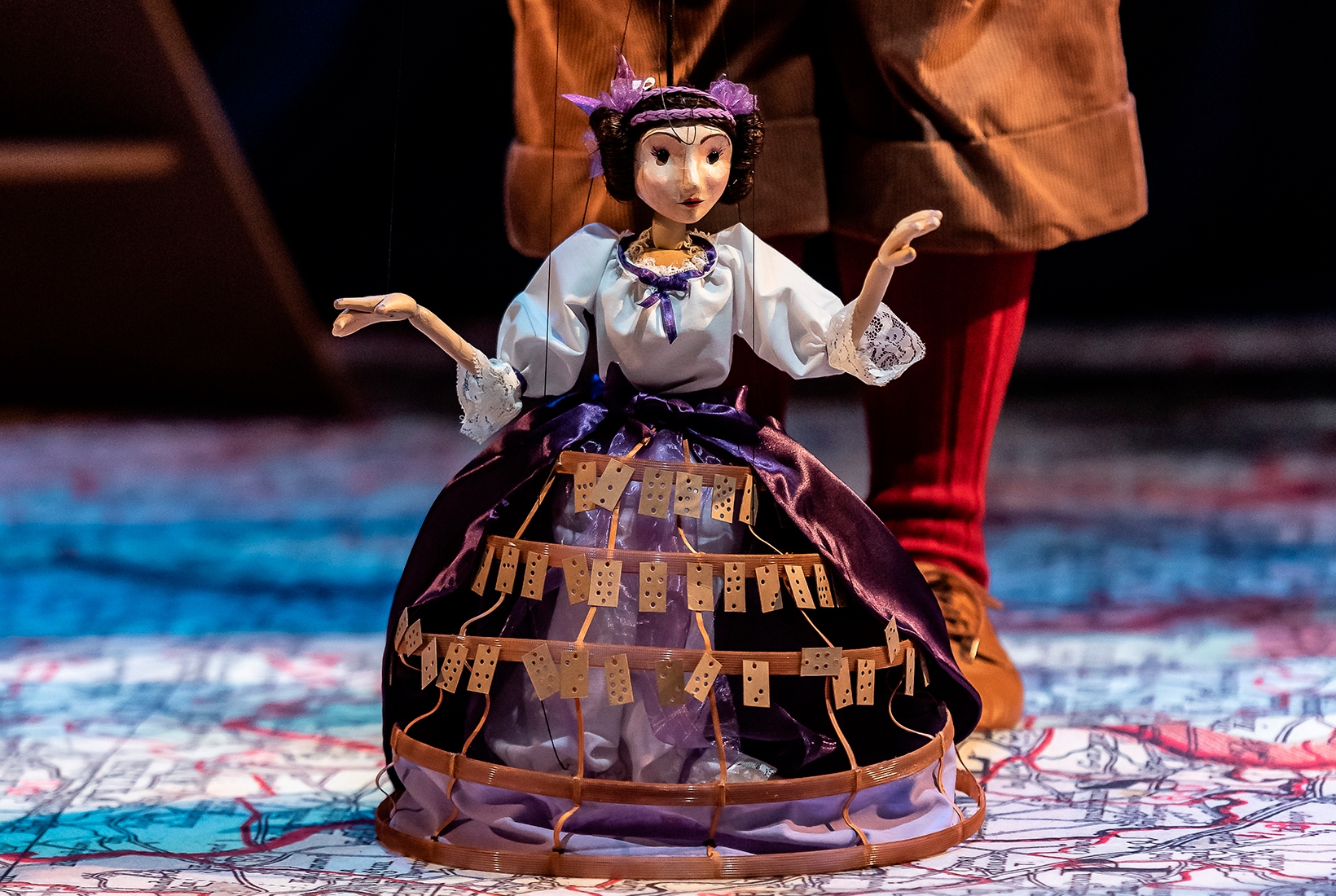Jina and the STEM Sisters is a blatant act of propaganda. And its intentions are excellent. This is a musical puppet show that sets out to encourage girls of eight and older to take up careers in science where women remain under-represented.
The heroine, Jina, is a schoolgirl who embarks on a hike through a dark forest haunted by ghosts and demons. It’s not clear to the viewer why she’s there or where she’s going. And she hasn’t a clue either. Perhaps the forest represents the world of intellectual repression she inhabits. ‘I ask a lot of questions,’ Jina tells us. ‘They say, “too many questions”.’
That’s an odd start. Do we live in a society that wags its finger at curious children? It’s hard to imagine a teacher or parent chastising a girl for being too inquisitive. And if the adults prevent her from investigating her world she can dodge their disapproval by using the internet. But Jina sees herself as a helpless drip. ‘I’m feeling very small,’ she whimpers, ‘like I don’t really matter.’ She’s visited by an all-female team of thinkers and pioneers who explain that she needs persistence and intellectual autonomy to become successful. Hypatia, a neo-Platonist philosopher of the 4th century AD, tells her: ‘Reserve your right to think.’ Which is sound advice. But Hypatia’s story ends unpleasantly. She’s attacked by a lynch mob screaming ‘Kill the witch’, and stoned to death.
Next up, Maria Sibylla Merian, an entomologist of the 17th century, who teaches Jina to collect specimens. ‘Here little beetle,’ calls Merian. ‘I know you’re here somewhere.’ This technique works only with well-trained insects who speak English. Jina meets Marie Curie, who explains that her work with radioactive materials led to her premature death from cancer. Oh God. Another gruesome detail.
If you want a work of propaganda that brings more girls into science, commission a man
Ms Curie’s songs are filled with phrases that have little or no meaning.
I discovered radium in 1898 Which is, I think, we all agree, a most impressive date.
This sounds like padding. And she croons about the accolades she won:
I remained courageous, never willing to give up Till finally they awarded me the Nobel Science Cup.
The writer, Rachel Barnett-Jones, was unable to find a rhyme for ‘Nobel prize’ so she falsified the name of the honour Marie Curie received. There are other bizarre inaccuracies. Jina is informed that Curie’s discoveries saved ‘trillions of lives’.
As she advances through the 20th century, our sad little heroine is still blundering around the forest being menaced by ghouls and monsters. She meets the Hollywood actress Hedy Lamarr, who was also a world-class scientist and inventor. Lamarr’s work on signals technology helped the US navy to improve its missile-targeting systems.
‘My inventions were about listening,’ complains Lamarr. ‘But were they listening to me? No.’ Yet another negative thought. Two strange lessons are being taught here. One is that schoolgirls are timorous, delicate creatures who need to be warned that, ‘If the journey feels too daunting we have to start with the littlest steps.’ (Imagine a man saying that to a boy.)
The second message is that women in science are mostly outcasts and misfits who face numerous obstacles to their professional advancement and who will probably be overlooked by their contemporaries and by history.
Jina and the STEM Sisters is bound to keep girls out of the lab. And in a perverse way, this may be helpful. If lots of average candidates are prevented from studying chemistry, biology and physics, the community of female scientists will be smaller and therefore more exceptional in its achievements. However, that’s not the objective here. The conclusion is inescapable. If you want a work of propaganda that brings more girls into science, commission a man.
Inside is a trio of short plays from Orange Three Theatre. The third, ‘Ursa Major’ by Joe White, opens in Richmond Park. A young scientist, Jay, encounters an older woman, Callisto, sleeping rough. Jay is a scientist at UCL who invites Callisto to his house. Perhaps he wants to boast about his comfy home, his burgeoning career and his stable marriage. But he suffers from obsessive compulsive disorder whose cause Callisto correctly identifies.
Callisto, being at rock-bottom, is fearlessly honest about herself. Her back story includes all kinds of strange but believable oddities. Her first husband was a brute who served a term in jail for violence and was later eaten by a bear during a trekking holiday. Callisto was sad to learn that the animal had been shot dead for ridding the world of her ghastly husband. She urges Jay to open up and tell her the truth about his life. ‘My ex was eaten by a bear. I’ve heard it all,’ she says.
This is a weird, funny, gripping play, with an ending that flips one’s expectations on their heads. It’s the best type of drama. Not a slice of art, a slice of life.








Comments